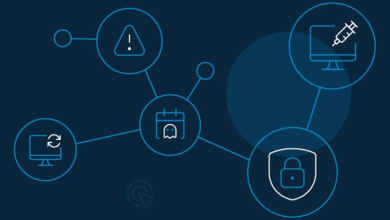The business case for women in cybersecurity

Despite the escalating number of cyberattacks, a massive gap persists between the scale of the risk and the number of cybersecurity professionals hired to combat it. In India, this gap is alarming: 40% of CIOs/CTOs report understaffed cybersecurity teams, according to ISACA.
Promoting diversity in cybersecurity offers a solution to this talent shortage. By tapping into a broader pool of talent, organisations can better meet their staffing needs and ensure they possess the necessary skills and expertise to navigate the growing threat landscape. A diverse workforce brings a range of perspectives, experiences, and knowledge, empowering organisations to identify overlooked vulnerabilities and develop more effective risk mitigation strategies.
Diversity isn’t just ethically sound; it’s good for business. The cybersecurity industry stands to benefit greatly from diverse perspectives, ultimately affecting the bottom line. Corporations identified as more diverse and inclusive are 35% more likely to outperform their competitors (McKinsey report). Additionally, companies with diverse management teams see a 19% increase in revenue compared to their less diverse counterparts (BCG report).
Why women are missing in cybersecurity?
When cybersecurity comes to mind, most people picture a man wearing a hoodie, seated in front of a computer in his parent’s basement, hacking into systems.
Lack of access and agency form major hurdles. A BCG study revealed that 47% of women globally lack interest in cybersecurity careers, primarily due to limited information and exposure. Hands-on opportunities like projects and internships are often scarce for women.
The burden of unpaid household work leads to lower earnings for women. This, combined with discrimination, discourages many from pursuing cybersecurity careers. Research from ISC shows a staggering 87% of women in the field have experienced unconscious bias. This bias further manifests in a compensation gap: 32% of men in cybersecurity earn $50,000-$100,000 annually, compared to only 18% of women.
Taking charge of change
Organisations must recognise the unique strengths women bring to cybersecurity: strong communication, attention to detail, and diverse perspectives. The industry must offer equal opportunities for women to become leaders, ensuring they aren’t confined to lower-level roles. Mentors and sponsors play a vital role in guiding women, fostering their business acumen, and helping them overcome challenges in a male-dominated field.
Systemic change is also crucial. We must encourage girls to explore cybersecurity careers and push organisations to adopt inclusive programs at every stage, from hiring to retention. Companies must look beyond the “perfect candidate,” actively seek diverse talent, and invest in training and reskilling.
Hiring is just the start. Organisations must create a culture of belonging where women feel valued. This includes fostering psychological safety and establishing women-led networks.
Diversity makes cybersecurity teams stronger, enabling organisations to better understand the needs of their customers. In an ever-evolving threat landscape, a workforce that reflects the diversity of those it protects is essential. Continued efforts to empower women in cybersecurity will promote gender equality, expand opportunities, and bolster our overall cyber resilience.



